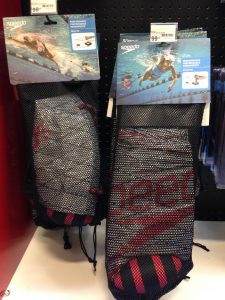The last month has been a busy one for the new wave and towing tank . Approximately 140 water tankers (bowsers in the correct parlance) came and went leaving behind 3000 tonnes of pure Otterbourne water. Carriage installation time lapse….
The first proper use of the wave makers occurred last week and they can create some large waves which is very exciting. We are hoping to demonstrate these at the next University open days at the end of this week all day on Friday 3rd and Saturday 4th. We are very keen to promote our ship science degree programmes to prospective students so please feel free to let friends and family know of this opportunity.
We are doing regular tours of the new tank, talks about ship science, tours of our new building (B176)and its new labs as well as the

Faculty Design Show in B177. The new tank is in B185, all on the new Boldrewood campus co-located with Lloyd’s Register’s Global Technology Centre. Just pop in and have a chat with the staff and students around.
As usual in a small discipline we find it difficult to get the message out about the fascinating careers and excellent salaries to hard pressed schools and their students so any help our friends can do in this respect is much appreciated. The next Open day opportunity is in early September.
We are more than happy for members of staff to visit schools to give talks or for a school group to visit us. Please contact our admissions teams, led by Dr Dominic Taunton, if you would like to discuss these opportunities.
Monthly Archives: June 2015
MARINE2015 in Rome

This year the 6th International Conference on Marine Engineering was held in Rome. The conference spanned three days with three parallel sessions, aiming to bring together scientists working on computational methods for maritime engineering. Presentations came from various backgrounds, including naval architecture, offshore engineering, coastal engineering, renewable energy, underwater structural engineering and fish farming. Most attendees were from a computational fluid dynamics background, though with a great variety of methodologies. Whilst viscous-flow finite volume codes were the most represented, there were interesting results from smooth particle hydrodynamics and Lattice-Boltzman methods. There were several plenary lectures which focused on fluid-structure interactions and complex viscous modelling of bubbly flows and breaking waves.
Across all fields and methodologies there were some similar themes. Accurate viscous modelling, adaptive mesh technologies and hardware-software interaction were key topics throughout. In naval architecture, much of the discussion was focused on accurate manoeuvring simulations in waves, design & optimization and the use of advanced turbulence modelling.
The University of Southampton had two attendees: Ameen Bassam presented on “Ship Voyage Energy Efficiency Assessment Using Ship Simulators” and James Hawkes presented on “Chaotic Linear Equation-System Solvers for Unsteady CFD”.
The next MARINE conference will be held in Nantes, France, in 2017. Full papers from this year can be downloaded from:
http://congress.cimne.com/marine2015
Working harder to swim faster
Marion James, a FSI PhD student based in our Performance Sports Engineering Laboratory (PSEL) at the University of Southampton while on holiday in the USA last month was pleased to see the outcome of some performance testing undertaken awhile ba

 ck in the University of Southampton Jubilee Pool. She commented, ‘Speedo USA asked us to drag-test and evaluate the performances of several products to support the training programme of high-level swimmers, and especially sprinters. As a result, two products ‘Dragster’ and ‘Dragtini’ are now available on the US market. They act as a parachute to increase the swimmer’s drag during a training session in order to provide higher intensity training and power-up swimming performances.
ck in the University of Southampton Jubilee Pool. She commented, ‘Speedo USA asked us to drag-test and evaluate the performances of several products to support the training programme of high-level swimmers, and especially sprinters. As a result, two products ‘Dragster’ and ‘Dragtini’ are now available on the US market. They act as a parachute to increase the swimmer’s drag during a training session in order to provide higher intensity training and power-up swimming performances.
PSEL has been looking into swimming drag over the last six years. A recent paper in Journal of Sports Engineering and Technology by lead author Angus Webb looks at how repeatable techniques are for measuring a swimmer’s resistance when towed passively
